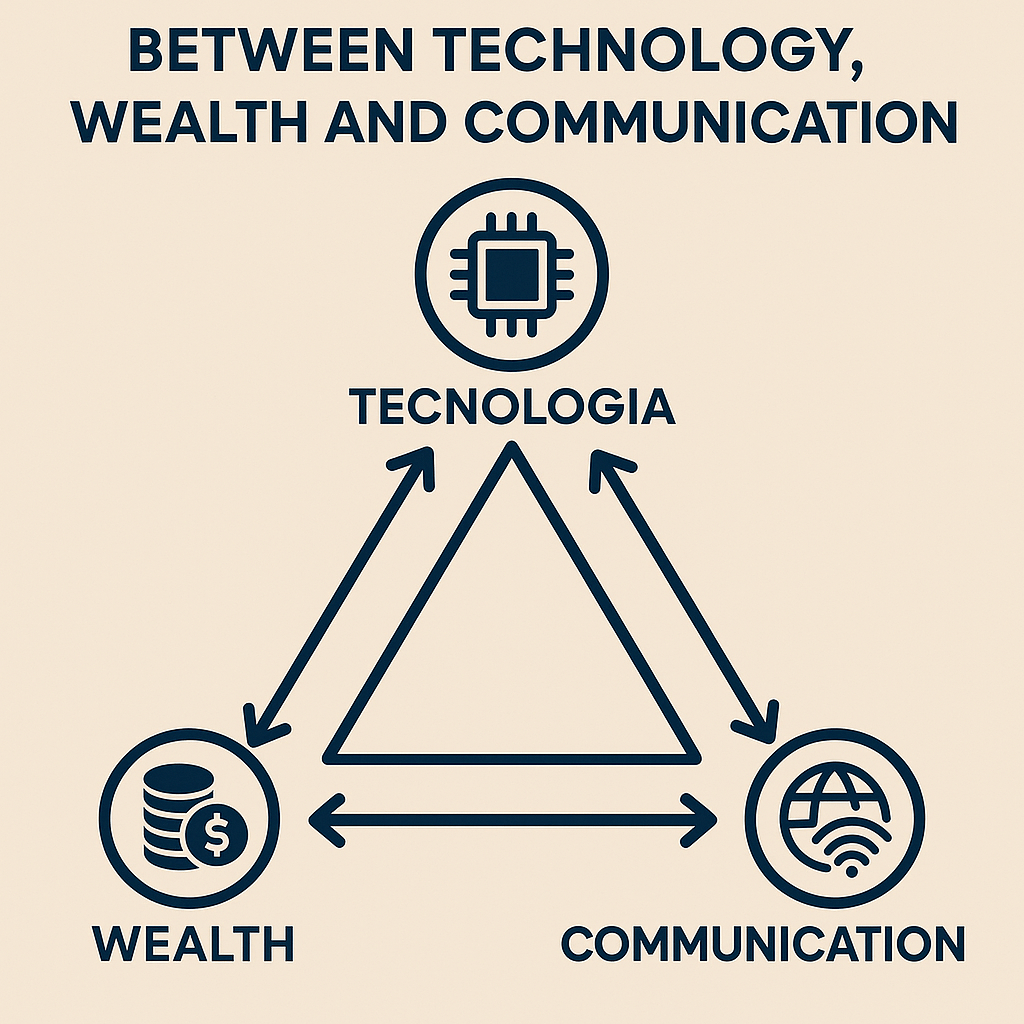Geo-Economic Power Shifts: How Tech Elites Are Reshaping the International Order
The world is currently navigating a turbulent transition in the international order. This era is marked by intensifying rivalry among global powers, a weakening of multilateral structures, and, perhaps most significantly, the rise of transnational technological elites who are reshaping the global geo-economic landscape. The concentration of both technological and financial power in the hands of a select few is emerging as a crucial dynamic, carrying implications for state sovereignty, economic competition, and the future of global governance.
The Evolving Global Order
Historically, international relations were largely defined by the interactions of sovereign states, mediated through multilateral institutions. Today, this paradigm is eroding under the weight of several converging trends. The old frameworks of global governance, those built on open dialogue, consensus-building, and shared rules, are increasingly challenged by both the assertive unilateralism of major powers and by fractures within key institutions themselves.
Amid this upheaval, a novel concentration of economic and technological capital is taking shape. This phenomenon is driven not only by states, but also by private actors wielding resources and influence on a scale rivaling that of nations. These tech-driven elites are not merely facilitators of global commerce or innovation; they are becoming central nodes of authority, able to mediate economic transactions, control flows of information, and shape the processes through which societies confer legitimacy on political actors and systems.
The United States and China: The New Geo-Economic Hubs
At the forefront of this transformation are the United States and China. The United States retains an immense advantage through its symbiotic relationship between Silicon Valley tech giants, Wall Street financiers, and the federal government. The world’s most valuable digital platforms ranging from social media to e-commerce and cloud computing are predominantly American. This integrated ecosystem creates a powerful engine for economic expansion and establishes the United States as a global trendsetter in both technology and finance.
China, meanwhile, has rapidly constructed its own digital and financial walled garden. Chinese technology conglomerates, spanning telecommunications, e-commerce, fintech, and artificial intelligence, have flourished under the auspices of state guidance and control. However, China’s rise is characterized by an enduring systemic opacity. The government’s central authority is never far removed from the decisions of even its largest and most dynamic companies. These dynamics persist despite efforts to internationalize Chinese technology, from mobile payment systems to hardware infrastructure.
This tension, one between market dynamism and state-led coordination, defines China’s approach to technological and economic expansion. The result is a global geo-economic center of gravity that oscillates between open-market innovation and state-centric strategic planning.
The EU: Regulatory Power Amid Strategic Marginality
In comparison, the European Union finds itself in a distinctly different position. While its market remains vast and affluent, its capacity for direct influence on global digital and technological architectures is more limited. The EU’s role is chiefly regulatory. It acts as a rule-setter, leveraging its market size to impose standards on privacy, competition, and data protection that reverberate worldwide. Yet its lack of major indigenous technology champions dilutes its strategic weight, and decision-making remains fragmented by the diversity of interests within its member states.
Europe’s marginality is thus not one of irrelevance, but of missed opportunity. While European values around digital rights, security, and competition inform global debate, the region’s technology sector struggles to keep pace with American dynamism or Chinese scale. The EU’s regulatory primacy gives it some leverage, but its lack of leadership in digital infrastructure and platforms circumscribes its voice in shaping the emerging digital order.
The New Tech Elites: Power Beyond Borders
The rise of transnational tech elites is best personified by figures like Elon Musk, Jeff Bezos, and Mark Zuckerberg. As Mattiacci (LinkedIn 2025) remarks, these individuals are more than entrepreneurial icons; they are nodes through which global economic and informational flows increasingly pass. Each presides over infrastructure that mediates not only commercial exchanges but societal conversations and, by extension, the legitimacy of political institutions.

This development signals a dramatic shift in the architecture of power. Increasingly, power is measured by who controls the digital infrastructures that underpin economic life, public discourse, and societal trust. The emergence of this class of actors introduces new asymmetries into global competition—one in which states must reconcile their relationships with companies whose interests may not always align with national priorities.
Russia’s Distinct Model: Oligarchic Concentration under State Control
Unlike the United States or China, Russia’s economic elites operate under a model where private influence is rigidly subordinated to the state. The economic order is characterized by a concentration of wealth and resources in a handful of oligarchs who maintain their position through close alignment with the Kremlin. In the digital sphere, Russian platforms like Yandex and VKontakte remain powerful but largely contained within national and regional boundaries.
The fusion of oligarchic economic power and political authority in Russia precludes the development of truly transnational digital conglomerates. The economic elite’s orientation toward energy and raw materials, sectors easily placed under tight state control, further restricts their global leverage in the digital age. As a result, Russia’s digital infrastructure does not exert the same degree of international reach and autonomy characteristic of American or Chinese competitors.
India: An Emerging Power Balancing Autonomy and Integration
India finds itself at a crossroads. The country has gradually developed a set of flourishing technology and industrial conglomerates, which are beginning to shape the country’s digital landscape. Yet, unlike China’s overt state guidance or the United States’ laissez-faire model, India pursues a balancing act: seeking to foster globally competitive firms while resisting wholesale dependence on foreign digital giants.
This intermediate model brings both opportunities and risks. On one hand, India’s integration into global digital markets promises avenues for technological leapfrogging and knowledge transfer. On the other, India faces the challenge of preventing foreign dominance in critical digital infrastructure, which could jeopardize its technological autonomy and strategic independence. As such, India’s policy dilemmas increasingly center on how to guard its digital sovereignty while engaging productively with global tech ecosystems.
Asymmetrical Configurations: The Mosaic of Contemporary Power
The competition of the 21st century is not a simple clash between states and digital conglomerates, but rather a complex mosaic of asymmetrical relationships. Each region or state crafts its own configuration of public and private power or a blend shaped by its history, institutions, and strategic outlook.
- In the United States, tech companies possess considerable autonomy, often surpassing traditional state boundaries in their reach and authority.
- In China, tech and financial elites are closely managed by the central government, serving as instrumental arms of the state’s broader geopolitical ambitions.
- In Russia, oligarchs are bound to the state in a tightly controlled arrangement, constraining the development of independent digital champions.
- In Europe, regulatory measures afford some measure of influence but cannot fully substitute for gaps in native technological capacity.
- India, meanwhile, attempts to combine integration and autonomy as it seeks a uniquely national pathway in a world dominated by tech superpowers.
The Global Implications
The ascent of transnational tech elites and the growing role of digital infrastructures reframe the central issues of global power. National borders still matter, but the locus of power increasingly resides in the capacity to build, maintain, and control the digital arteries of globalization. The new geo-economy is one of interwoven spheres of influence, where state and non-state actors continually negotiate the terms of sovereignty, economic advantage, and societal trust.
For many states, particularly those outside the American and Chinese orbits, the central challenge is to craft strategies that defend their economic and technological sovereignty without isolating themselves from the opportunities of deeper integration. The regulatory, diplomatic, and economic choices made today will shape the power dynamics of tomorrow.
Conclusion
The ongoing transition in the international order is not only a function of power rivalries among states, but a reflection of deeper structural changes in the global economy.
Transnational technological elites hold unprecedented sway, reshaping the contours of power and sovereignty.
States, in turn, must adapt to a reality where the boundaries between public authority and private control are increasingly blurred. In this evolving landscape, the capacity to cultivate indigenous digital champions, design effective regulatory frameworks, and project strategic autonomy will determine which actors can truly shape, and not just react to, the next phase of global geo-economic competition.
This article is based on an article which the author published in Italian on August 4, 2025 by PRP Channel.

